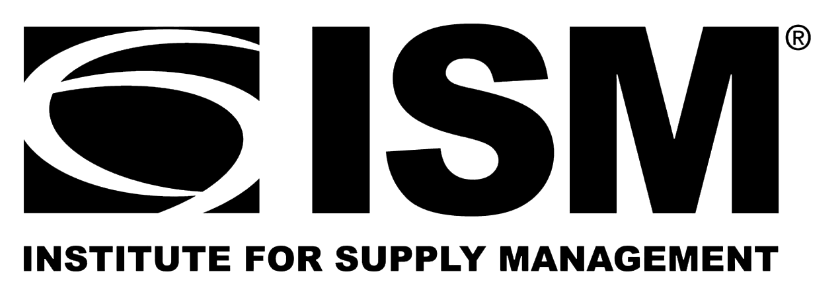Economy

HARDInomics: Strong Growth to Continue
Written by Sandy Williams
December 6, 2018
How long will this economic cycle last? That is the difficult question HARDInomics posed to Anirban Basu, Chairman and CEO of Sage Policy Group.
Currently, the economy is at the peak of an economic cycle, said Basu, and is experiencing a “49-year low in unemployment, a monthly job creation winning streak that is unprecedented, surging consumer and business confidence, and expanding industrial production and construction activity.”
“Based on available information, the most likely outcome is for the economy to generate rather strong growth over the next several quarters, before relenting in the face of rising inflationary pressures and interest rates at some point early in the next decade,” said Basu. By 2020, the economy will begin to flatten, and the risk of a contraction will increase.
The housing market, closely tied to HVACR equipment sales, is in a slowing phase with existing home sales and permits for new homes on a downward trend. Increasing mortgage rates and higher cost for building materials has impacted affordability for consumers.
Spending on non-residential construction is still positive but, higher interest rates and construction costs are expected to restrain activity and growth in 2019. The national Architecture Billings Index indicates demand will continue in 2019, but there will be variations by region.
Northeast:
Sage Policy Group forecasts residential housing permits in the Northeast will decline 5 percent year-over-year in 2018 and 4 percent in 2019. Residential permits are expected to grow in New York and Massachusetts, but will be mostly flat in other states in the region. Existing home sales have slowed after peaking late last year. Sage attributes some of the housing slowdown to less people moving into Northeast. The region ranks sixth for year-over-year job growth and fifth for building permit growth. Nonresidential construction is benefiting from a boom in the technology sector.
Great Lakes:
Sage expects growth in housing permit authorizations to cease in the Great Lakes region, but remain at a high annual pace. Residential permit growth in Indiana and Kentucky is offsetting declines in Ohio and Michigan. Steady employment growth in the region, and a rapid climb in construction employment, supports confidence that HARDI demand will continue well into 2019.
Central:
The Central region, comprised of 11 states, has seen steady but mediocre growth for several years. Housing permit authorizations are expected to remain at low single-digit growth in 2018 before declining in 2019. Permit authorizations in Illinois have been flat in the past three years. Sales of existing homes peaked in the region in mid-2017 and have declined throughout 2018. Employment growth was the sixth slowest of the regions from August 2017 to August 2018, but still at a respectable 3.6 percent. Construction employment growth bodes well for HARDI members in the Central region next year.
West:
The West is outperforming most of the rest of the nation economically, says Sage. The impressive employment growth in the region shows no sign of slowing down. Job creation expanded by 2.4 percent in the West compared to 1.6 percent year-over-year growth nationwide. Construction jobs added to employment, swelling 5.8 percent. Housing permits peaked in the Western region, but are headed downward due to sharp declines in Arizona and Nevada. The wildfires in California may have also impacted permitting activity, says Sage. Existing home sales for the National Association of Realtors’ Western region peaked late last year and continue to deteriorate. Prospective buyers have been frustrated by the severe shortage of available homes in the market.
Southwest:
Sage forecasts flat to lower permit growth for the Southwest in 2019, but expects the region to outperform the other six regions. Sales of existing homes have slowed, but remain positive versus other regions tracked by NAR. Residential permit activity continues to make gains in Texas, Arkansas and Louisiana. Impressive employment growth in the region will help demand in 2019.
Southeast:
Residential permits increased 6 percent in 2017 and Sage expects a 9 percent or higher jump in 2018, followed by a growth-challenged 2019. Existing home sales growth has slowed with some areas of the region performing better than others. Compared to other regions tracked by NAR, sales growth is positive. All states in the Southeast achieved 1 percent or more annual employment growth since the spring with the pace of growth accelerating throughout the year. Employment data supports continued demand for HARDI member products and services.
Mid-Atlantic:
Sage is forecasting residential permits to return to a normal pace in 2018 after a modest surge and drift lower in 2019. Existing home sales in the Mid-Atlantic are not expected to drive demand in 2019. Permit authorizations for new homes have stalled in the region recently. The Mid-Atlantic ranked last in terms of year-over-year construction job growth and lost construction jobs from January to August. Residential construction is deteriorating, but commercial activity has been helped by defense spending, port activity, and regional specialty segment expansions.
About HARDInomics:
HARDInomics, a research unit of the Heating, Air-conditioning and Refrigeration Distributors International (HARDI), tracks the variables that will drive demand for HVACR equipment and services in the United States. Economic data and trends are analyzed at the state level, when possible, and through HARDI industry data and surveys. HARDI publishes both the monthly TRENDS report as well as a quarterly macro and regional TRENDS forecast.

Sandy Williams
Read more from Sandy WilliamsLatest in Economy

New York state manufacturing index drops again in April
Firms were pessimistic, with the future general business conditions index falling to its second lowest reading in the more than 20-year history of the survey

Construction adds 13,000 jobs in March
The construction sector added 13,000 jobs, seasonally adjusted, in March, but tariffs could undermine the industry.

Supply chains, end-users brace for impact from tariffs
Supply chains are working through what the tariffs mean for them

ISM: Manufacturing expansion loses steam after two months of growth
US manufacturing activity slowed in March after two straight months of expansion, according to supply executives contributing to the Institute for Supply Management (ISM)’s latest report.

Chicago Business Barometer rose to 16-month high in March
The Chicago Business Barometer increased for the third-consecutive month in March. Despite this, it still reflects contracting business conditions, as it has since December 2023.
